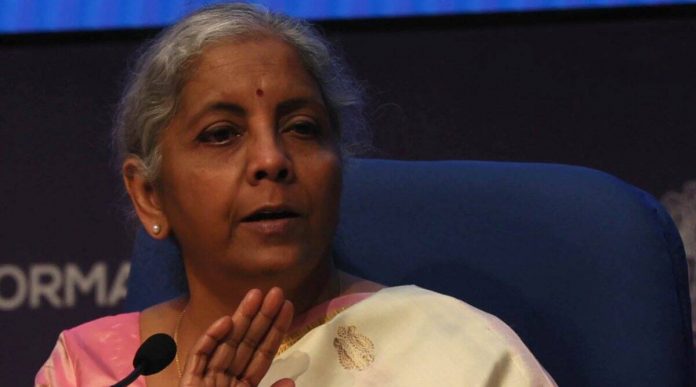Finance Minister Nirmala Sitharaman on Tuesday acknowledged that children, especially those from economically weak sections, had lost almost two years of formal education due to disruptions triggered by the Covid-19 pandemic, but in her Budget speech did not specify the roadmap to reverse the learning losses of such students.
The Union Ministry of Finance increased the outlay for education from Rs 93,224 crore (in the 2021-’22 Budget estimate) to Rs 1.04 lakh crore. While it constitutes a jump of about 12 per cent, the figure comes down to 5 per cent when compared to the allocation in the 2020-’21 Budget (Rs 99,311 crore). The finance minister also said a digital university would be set up, and the “one class-one channel” initiative would be expanded as part of its digital education push.
“Due to the pandemic-induced closure of schools, our children, particularly in the rural areas and those from SC [Scheduled Caste] and ST [Scheduled Tribe] communities and other weaker sections, have lost almost two years of formal education. Mostly these are children in government schools. We recognise the need to impart supplementary training and to build resilient mechanisms for delivery,” Sitharaman told Parliament.
This time, the rise in allocation is the result of an increase in the amount earmarked for “Samagra shiksha [school education sector]” from Rs 31,050 crore in 2021-’22 to Rs 37,383 crore. The outlay under this head is marginally more than the Rs 36,322 crore earmarked in 2019-’20. The minister allocated Rs 421 crore under the Digital India e-learning component, up from Rs 367 crore in the 2021-’22 revised Budget estimate (the initial allocation in the last Budget was Rs 645 crore). She emphasised strengthening digital modes of learning to aid supplementary teaching, and proposed to set up the digital university to provide students access to “universal education with personalised experience”.
Sitharaman said the university would come up under a “hub-and-spoke model”, and its content would be available in all Indian languages. In the 2020 Budget, the government had proposed to “start a degree level full-fledged online education programme by institutions who are ranked within top 100 in the National Institutional Ranking framework”.
Sitharaman said the “one class-one channel” initiative under the PM e-VIDYA programme, launched in May 2020, would be scaled up from 12 to 200 channels to enable each state to provide supplementary education in regional languages to students in classes 1 to 12. The channels telecast pre-recorded lectures shot on the NCERT campus, and are currently available on the DD free dish and some other private DTH platforms.
The mid-day meal scheme, which was rebranded as PM-Poshan last year, also saw its allocation drop from Rs 11,500 crore in 2021-’22 to Rs 10,233 crore. The revised allocation for 2021-’22 was also Rs 10,233 crore, indicating that the fund earmarked for the scheme was not spent during the ongoing financial year as schools remained closed for months amid the Covid-19 pandemic.
The finance ministry, meanwhile, did not allocate funds to set up a Higher Education Commission of India, and a National Research Foundation, both of which were envisaged by the National Education Policy (NEP), 2020. It had been mentioned in successive Budget speeches from 2019 to 2021.
The government also slashed funding for the Higher Education Financing Agency (HEFA) from Rs 1 crore in the last Budget to Rs 1 lakh. The scheme had been mooted as a new way of aiding universities looking to develop their infrastructure. Glue grant, which is meant to encourage multidisciplinarity in universities in line with the NEP, has received a token allocation of Rs 10 lakh.
📣 The Indian Express is now on Telegram. Click here to join our channel (@indianexpress) and stay updated with the latest headlines
For all the latest Business News, download Indian Express App.



 Sourav Roy Barman… read more
Sourav Roy Barman… read more






